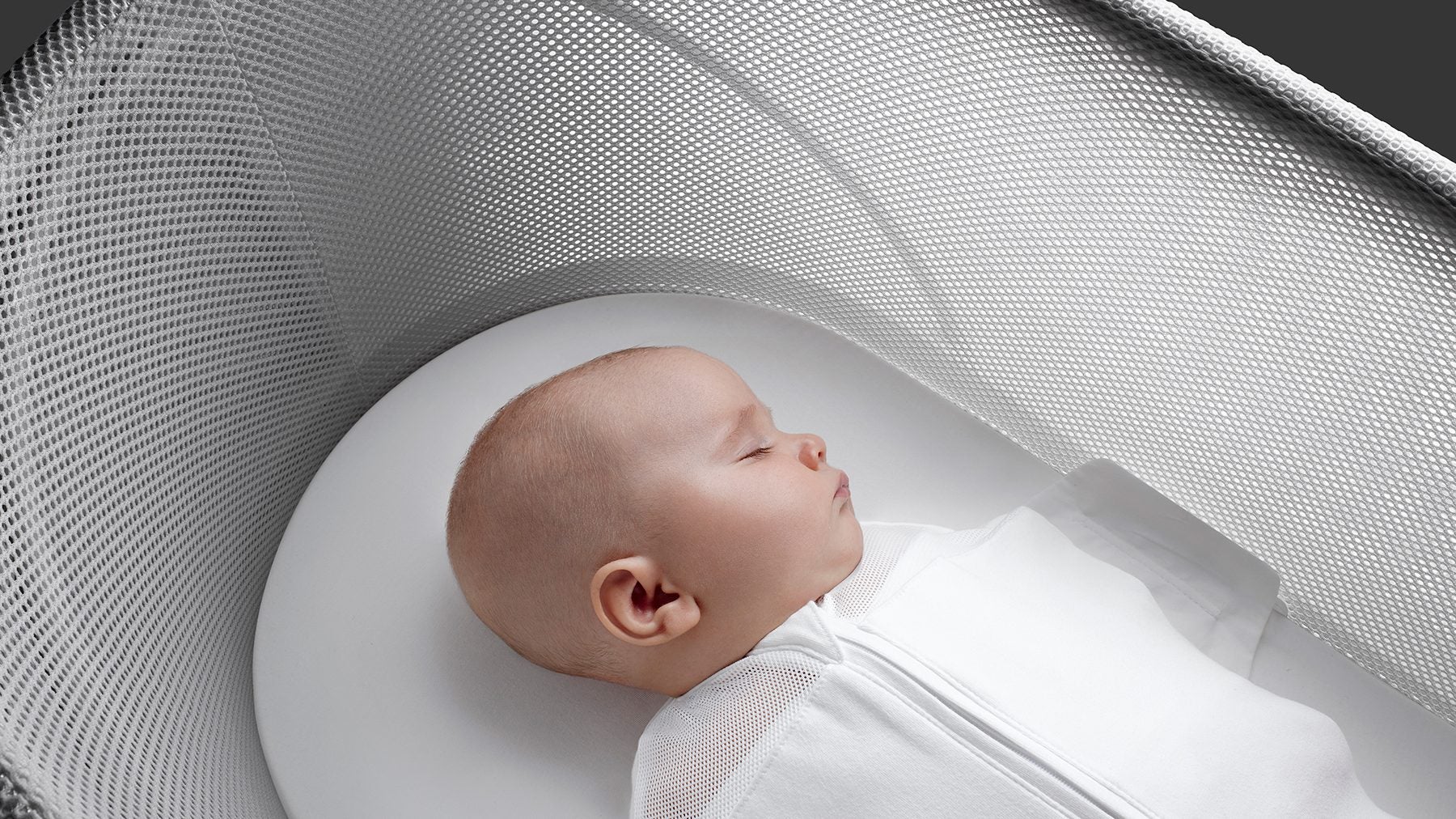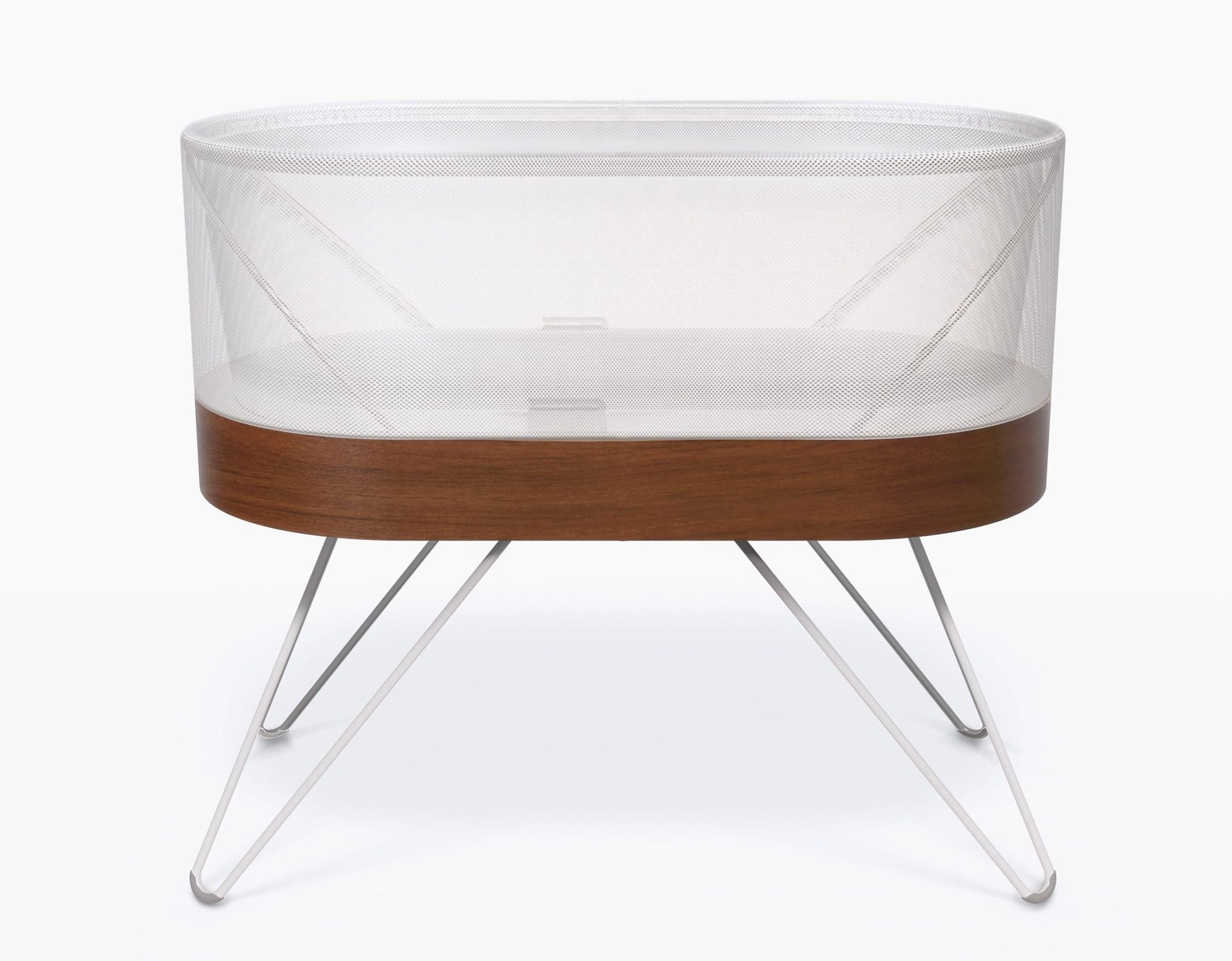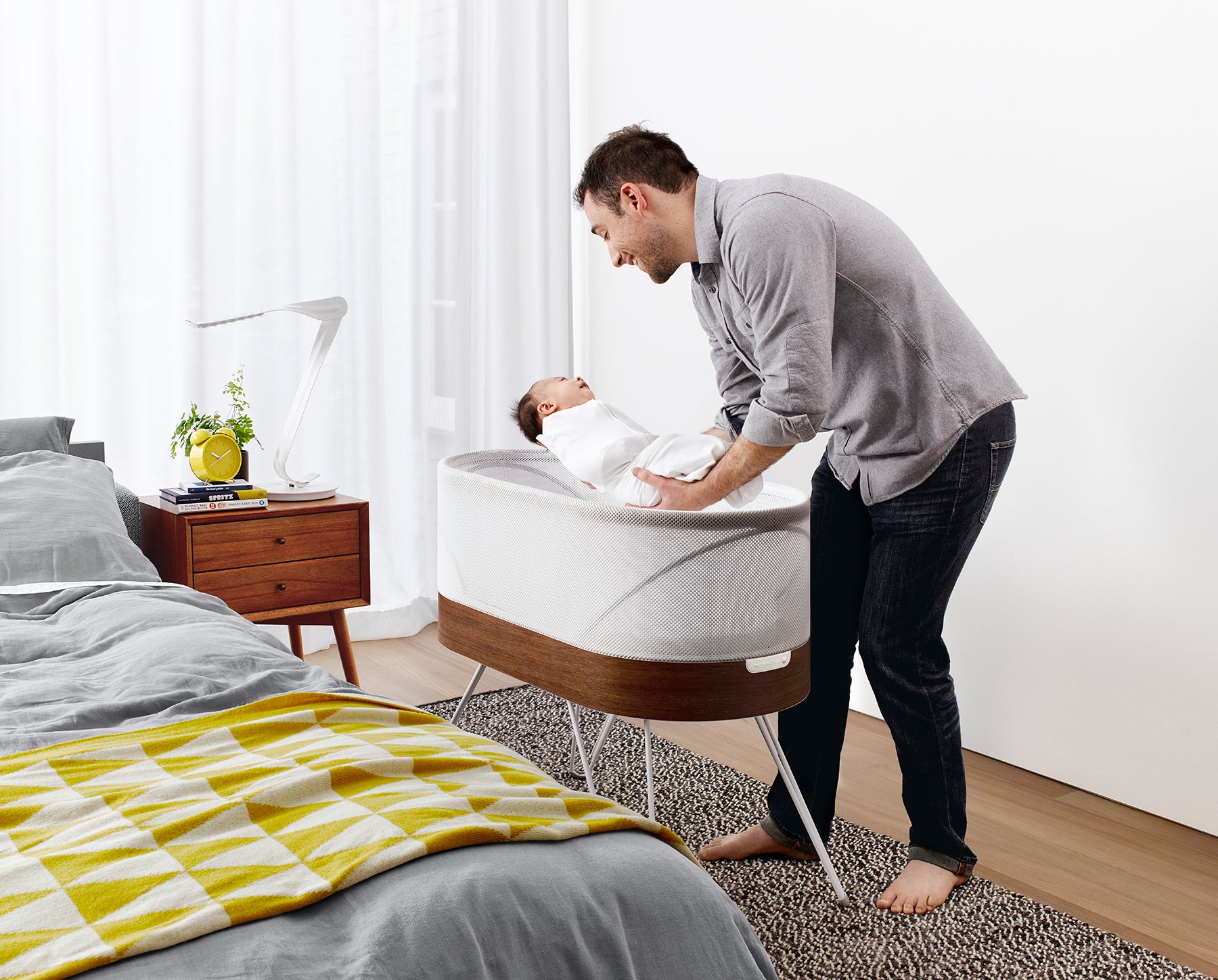This “smart crib” from MIT Media Lab-trained engineers is designed to quiet a crying baby in under a minute
Swaddle, Side-stomach, Shush, Swing, Suck. This five-step baby calming technique has made pediatrician Harvey Karp a celebrity among parents desperate for better ways to quell their newborn’s crying fits.


Swaddle, Side-stomach, Shush, Swing, Suck. This five-step baby calming technique has made pediatrician Harvey Karp a celebrity among parents desperate for better ways to quell their newborn’s crying fits.
The author of the 2002 bestseller The Happiest Baby on the Block, Karp has spent the last five years translating the tenets of his so called “5 S’s” method into SNOO, a “smart” crib designed to quiet a wailing infant in under a minute. Karp is unveiling the sleeper, meant for babies ranging from newborn to six months old, at the American Academy of Pediatrics conference in San Francisco today (Oct. 22).
SNOO was co-designed by a team of engineers initially led by Deb Roy, director of the MIT Media Lab’s Laboratory for Social Machines and Jawbone designer Yves Béhar. Karp says it recreates the sounds and sensations experienced inside a mother’s womb, and induces a “calming reflex” for fussy babies. SNOO’s sensors trigger a swaying motion in response to an infant’s movements while laying in the sleeper and emits white noise at levels calibrated to the quality of baby’s cries.
The unit also comes with a “sleep sack” that induces a swaddling effect. During a demonstration at the Quartz New York office, Karp explained that this straight jacket-like onesie clipped to the bed also prevents babies from rolling over onto their stomach during sleep, which can make it hard for them to breath and increase risk of sudden infant death syndrome.
Designed in a plain, mesh fabric, the sleep sack is notably devoid of the reassuring cute patterns typically found on baby clothing and furniture, and is instead characteristic of Béhar’s modern aesthetic found in his Jawbone speaker design and his futuristic Herman Miller SAYL chair. At first sight, the “egret” colored clothing looks oppressively constricting, but Karp says parents eventually get over the institutional look once they realize that the crib is better than usual at keeping their baby safe.

Karp says his ultimate goal is to help the entire family sleep better. ”It sounds trivial until you realize that the lack of sleep and exhausted parents lead to billions of dollars of healthcare costs from postpartum depression, infant sleep deaths, and car accidents,” he says.
He explains that the sound of a baby crying is so oppressive and stressful that the US military uses it as a form of torture. “The Navy SEALS are trained to endure torture by putting them through sleep depravation with the sound of crying babies blasting through the speakers,” Karp says. “That’s like a normal day for a family with a baby.” The US military’s Guantánamo “noise stress” mix tape included the shrill sounds of an inconsolable infant looped with Yoko Ono songs and cats meowing, according to a 2005 New Yorker article.

The SNOO crib has been tested on over 200 babies under four months of age and was shown to reduce crying and boost sleep, says Karp. The potential godsend for sleep-deprived parents retails for $1,160 on the Happiest Baby website, and is designed to work with a mobile app that allows parents to turn the crib on and off and override its automated functions if desired.
So, can SNOO’s “5 S’s” calming principles work on restless adults too? Karp explains that babies’ calming reflexes are echoed in our nervous system as grownups. “Do you ever fall asleep in planes, trains, and cars? Do you like the sound of the wind and the ocean?” Karp also points out the popularity of sleep-inducing white noise machines. “Meditative practices around the world with their ohm sounds imitate the experience [of being in the womb],” he says. “You’d probably like it yourself if you were tired and somebody held you and rocked you back and forth.”